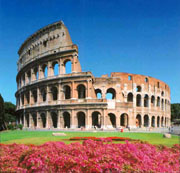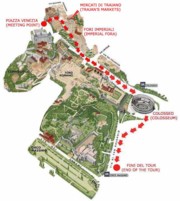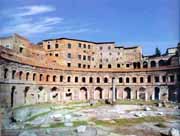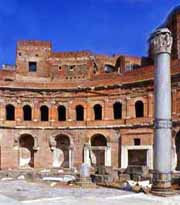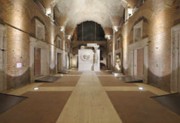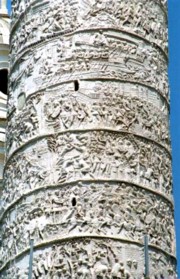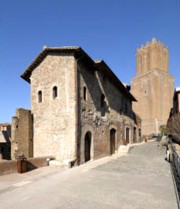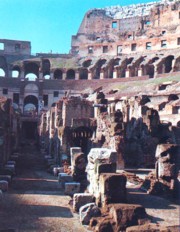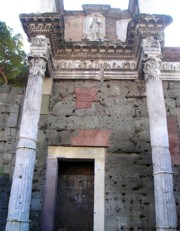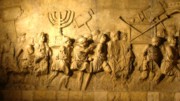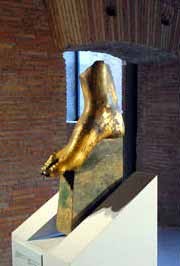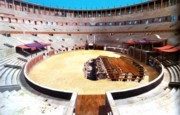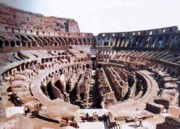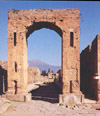
OF ANCIENT ROME – Imperial Fora, Trajan's Markets and Coliseum FOR DISABLED
COLISEUM WALKING TOUR
OF ANCIENT ROME – IMPERIAL FORA, TRAJAN'S MARKETS AND COLISEUM FOR DISABLED
Details
ANCIENT ROME - WALKING TOUR with Imperial Fora, Trajan's Markets and Coliseum (3 hours) FOR DISABLED WITH YOUR OWN GUIDE
|
DURATION: | 3 hours | |
|
PRICE: | View the price list | |
|
AVAILABILITY: |
All-year-round |
THE PRICE INCLUDES: |
Own local English-speaking Guide for the 3-hour tour THE ENTRANCE FEES ARE NOT INCLUDED |
All the upper sections of the monument have been equipped to accommodate persons with reduced mobility.
Entrance to the Imperial Forum Museum is made via the Great Hall of the Markets of Trajan by means of an electric wheelchair platform and a lift. Access is available to the via Biberatica, the upper floor of the Museum and the Milizie Gardens.
From the Milizie Gardens and Via Biberatica, via adapted walkways and passages, you can follow the external route of the monument, which also offers the possibility to enjoy panoramic views of the Imperial Forums.
You will meet the English-speaking guide in Piazza Venezia.
This marvellous tour of Ancient Rome will start with the visit of the famous Imperial Fora.
Via dei Fori Imperiali begins to the left of the Vittorio Emanuele II Monument, a broad, straight road built in 1932, which takes its name from the ruins of the for a it passes over.
Trajan’s Forum. The formidable task of Emperor M. Ulpiu’s reign was the expansion of the Empire towards the east, beyond Dacia. The Dacian Prince Decebalus, had imposed an ignominious peace upon the Roman emperor Domitian. In 101 A.D. Trajan departed from the Danube. Once his roads and fortifications were ready, he took the Dacian capial by force and imposed extremely hard conditions which Decelalus did not want to endure. In 105 A.D. there was a new battle. The Dacians fought desperately, but their army was destroyed. The heroic prince committed suicide and Trajan returned to Rome laden with treasure. After the celebration of the triumph, Trajan decided to commemorate his victory by building a Forum that would surpass all other for a in splendour and scale. By cutting away a good portion of the base of the Quirinal hill; 61 million cubic meters of earth and rock was moved to make way for the Trajan’s Forum, which became the most admired place in the city.
Set into the Quirinal Hill is the complex known as Trajan’s markets, which consists of a well-preserved, semi-circular, three story structure, and above a large vaulted hall, which resembles a basilica. The entrance to the complex is at Largo Magnapoli on Via IV Novembre.
The Forum of Julius Caesar, consecrated in 46 B.C. and later finished by Augustus was the first of the so called Imperial Forums, a built with the spoils of victory from the Gallic Wars. Formed by a rectangular piazza surrounded on all sides by porticoes, it had at its centre the Temple of Venus Genetrix.
The Forum of Augustus. After the assassination of Caesar, the conspirators Brutus and Cassius went to take possession of the provinces of Syria and Macedonia. In 42 B.C., they led their armies at Philippi against the heirs of Caesar, Octavian and Marc Antony. Just as Julius Caesar took a vow at Farsalo, so Augustus took one at Philippi: in the event of victory, he was to built a temple in a new event of victory, he was to build a temple in a new Forum and dedicate it to Mars, father of the Roman people and god of war. After the victory and the death of the two conspirators, Augustus maintained his vow and built the Temple of Mars Ultro in the centre of the new Forum.
The Forum of Nerva. Begun under the Emperor Domitian, this Forum was inaugurated in 97 A.D. by his successor Nerva. Built after the Forums of Caesar and Augustus, it was necessary to make the best of rather limited space, and so it extended in length rather than width. This was the site of the Temple of Minerva, which was still standing in 1606 when Pope Paul V had it demolished in order to use its marble to build the Pauline Fountain and the Janiculum Hill. New excavations of the Forum of Nerva seek to reconstruct the historical events and architectural history of the area over the centuries. The temple of Peace. The complex of Imperial Fora ended (on the side nearest to the Colosseum) in this temple of enormous proportions.
At the end of the Via dei Fori Imperiali, between the Esquiline, Palatine and Celian Hills, raises one of the greatest wonders of Roman civilization: the Coliseum.
The imposing remains of this immense amphitheatre still allow us to admire its ancient splendour. It was built by Jewish prisoners. Its true name is the “Flavian Amphitheatre”, though it was commonly called the Coliseum, both for its proportions and its vicinity to the Colossus of Nero. There is hardly a page of Roman history that is not in some way connected to the Coliseum, which became the symbol of the city and its life. The tour ends at the Circus Maximus.
SUGGESTIONS:
Take water, camera & sun cream. In low season warmer clothing may be required!
